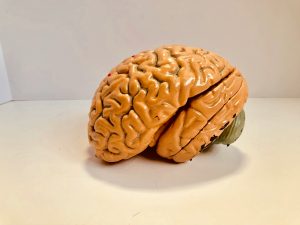An Introduction to Cognitive Behavioral Therapy (CBT)
 Your therapist mentions that their approach is based in “CBT.” You nod along, but in your head, you’re wondering what those letters actually stand for. Cognitive Behavioral Therapy, or CBT, is one of the most widely practiced and extensively researched forms of psychotherapy in the world. It’s not a vague, unstructured chat; it’s an active, skill-based approach that can empower you to become your own therapist.
Your therapist mentions that their approach is based in “CBT.” You nod along, but in your head, you’re wondering what those letters actually stand for. Cognitive Behavioral Therapy, or CBT, is one of the most widely practiced and extensively researched forms of psychotherapy in the world. It’s not a vague, unstructured chat; it’s an active, skill-based approach that can empower you to become your own therapist.
At Televero Health, many of our clinical partners are experts in CBT because it is a practical, evidence-based treatment for a wide range of conditions, including depression, anxiety disorders, and PTSD. Understanding its core principles can help you to get the most out of your therapy sessions and start applying the skills to your daily life.
The Core Idea: Thoughts, Feelings, and Behaviors Are Linked
The fundamental principle of CBT is simple but profound: our thoughts, our feelings, and our behaviors are all interconnected, and they strongly influence each other. CBT therapists often use a simple diagram of a triangle to illustrate this connection.
Here’s how it works:
- An event happens. (e.g., A friend doesn’t text you back.)
- You have a thought about the event. (e.g., “They must be mad at me.”) This is the cognitive part.
- That thought leads to a feeling or emotion. (e.g., You feel anxious and sad.)
- That feeling leads to a behavior. (e.g., You avoid texting them again and ruminate on what you might have done wrong.) This is the behavioral part.
The key insight of CBT is that it’s not the event itself that determines how you feel, but your interpretation—your thought—about the event. If you had a different thought, the whole cycle would change. For example, if your thought was, “They must be really busy today,” your feeling might be neutral or understanding, and your behavior would be to simply wait for them to text back later.
The Goal: Changing Unhelpful Patterns
In conditions like depression and anxiety, people often get stuck in negative, distorted patterns of thinking. These “Automatic Negative Thoughts” (ANTs) pop into our heads so quickly that we often don’t even notice them, and we accept them as fact. CBT helps you to slow down this process and to challenge these unhelpful patterns.
The goal of CBT is not to force you into “positive thinking.” It’s about learning to be a more flexible and realistic thinker. It teaches you the skills to:
- Identify your automatic negative thoughts.
- Evaluate those thoughts. You learn to ask questions like, “What’s the evidence for this thought? Is this 100% true? Is there another way of looking at this?”
- Challenge and Reframe the thoughts to be more balanced and less biased.
By changing your thoughts, you can change how you feel and, ultimately, how you act.
What Does a CBT Session Look Like?
CBT is an active and structured form of therapy. It’s not just about venting (though there is space for that). A typical session might involve:
- Setting an Agenda: You and your therapist will decide what you want to work on in that session.
- Reviewing Homework: CBT often involves practicing skills between sessions, like tracking your thoughts in a “thought record.”
- Learning a New Skill: Your therapist might teach you a new technique for challenging a specific type of negative thought.
- Problem-Solving: You will work together to apply these skills to a specific problem you are facing in your life.
CBT is an empowering approach because it is focused on teaching you a set of practical skills that you can use for the rest of your life. It puts the tools for change directly into your hands, helping you to break free from old patterns and build a healthier, more resilient way of thinking.
Key Takeaways
- Cognitive Behavioral Therapy (CBT) is a skill-based therapy based on the idea that our thoughts, feelings, and behaviors are all connected.
- The core principle is that our thoughts—not external events—determine how we feel and act.
- CBT teaches you to identify, evaluate, and challenge your automatic negative thoughts to create more balanced and realistic thinking patterns.
- It is an active, structured, and empowering form of therapy that gives you practical tools to manage your mental health.
Ready to take the first step? We can help. Get started with Televero Health today.
